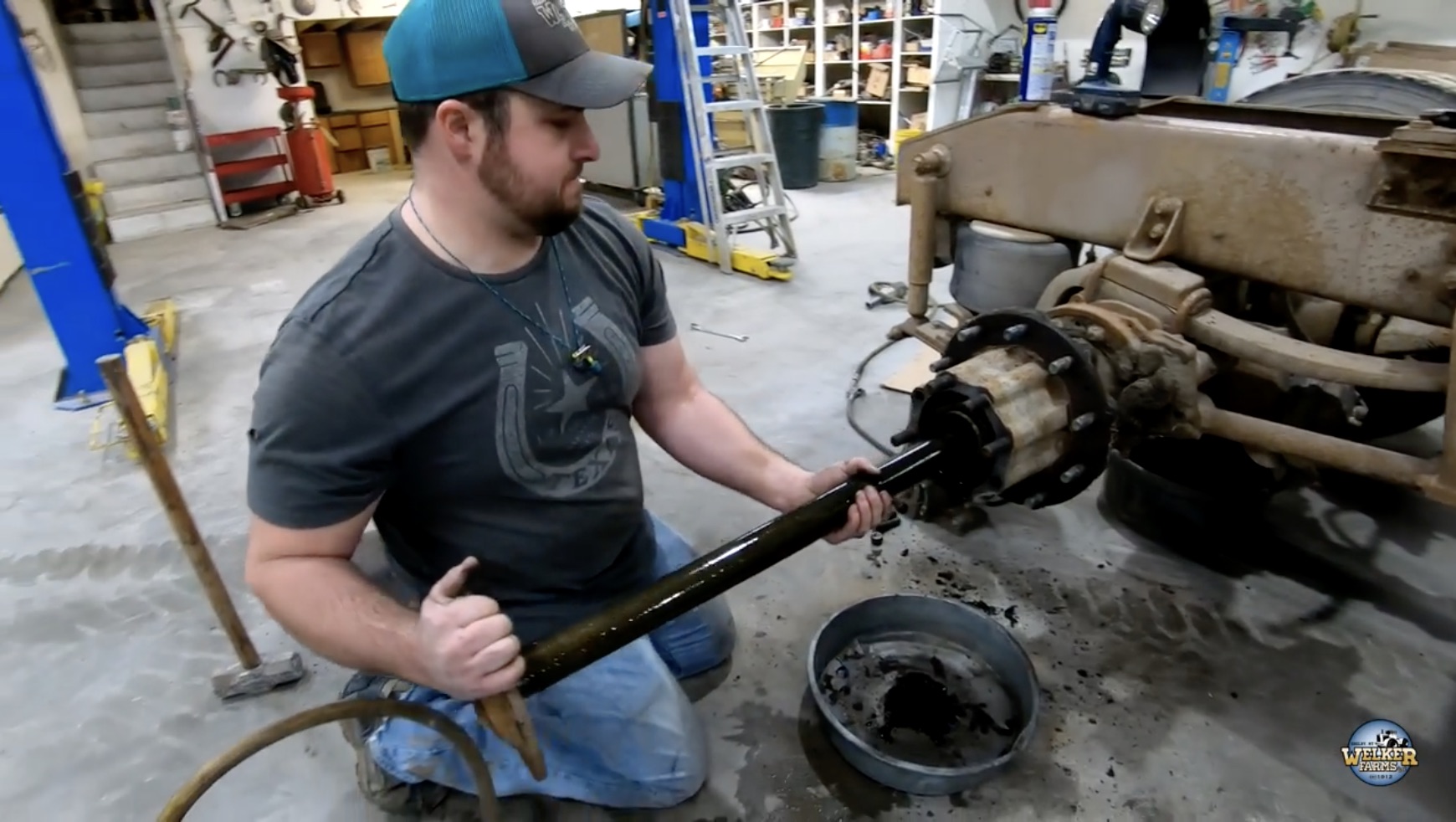A couple of days ago we introduced you to this 1986 International Eagle 9370 and the folks that are going to bring this semi tractor back to the land of the living. It’s one thing to pick up and drag home a derelict tractor, but unless you work with these rigs day in and day out, do you understand what it takes to get a tractor to move once more? If you think working on a regular pickup truck is an exercise in weight lifting, wait until you see the kind of work that is going to go into this one. Servicing rear axles by pulling off rolling stock that weighs hundreds of pounds, pulling out axle shafts that are meant to live under constant strain, checking the flywheel and clutch setup that requires safety straps just to make sure that the heavy bastards don’t fall onto the wary mechanic who is wielding the air gun, liberal use of the sledgehammer…none of this is for the weak or the unskilled. Brakes, shocks, air bags, hub bearings and seals…most of this is similar to what you are used to, just in a grander scale.
It’s nothing sexy like bolting on a new turbocharger or polishing up the chrome and making an old truck gleam. It’s not supposed to be. Semi tractors work first and look pretty later. If it doesn’t move safely, it’s not worth squat. So, knowing that the truck was purchased for $1,800, knowing that they want it running and moving before they move onto the restoration of a tractor that will make Lohnes pant with lust, and knowing that everything must be inspected before the Eagle gets a clean bill of health, it’s time to dive in and start tearing down the International to see what the truck is really made of:













We used to call then Intertrashinal and/or Irrational . They weren’t any good when new even less when worn out . the advantage they had was they were cheaper